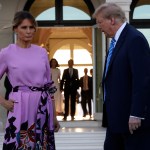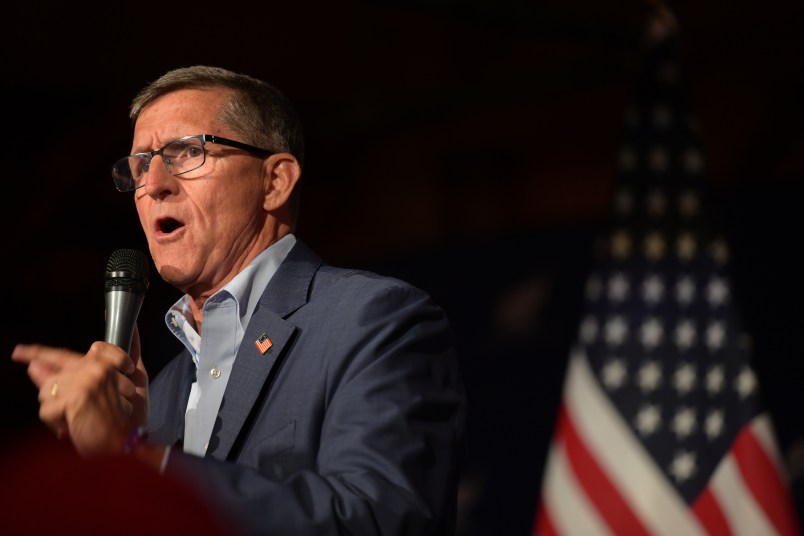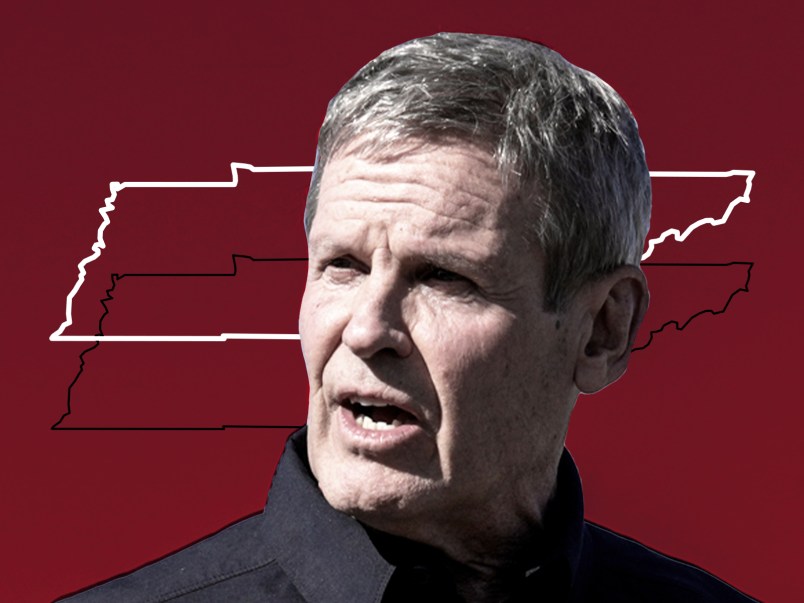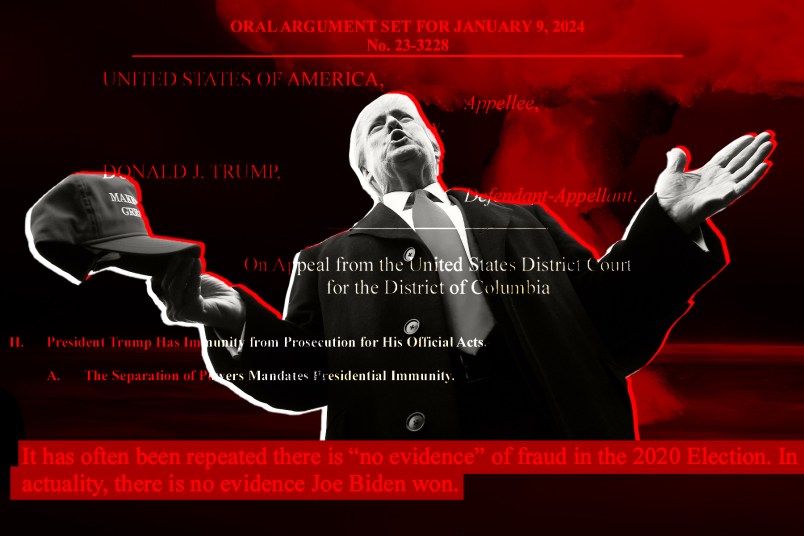For years, the CIA denied recording any interrogations of al-Qaeda detainees. For years, the Bush administration denied issuing any legal authorization for torture. And for years, members of Congress claimed ignorance of what the CIA and the Bush administration had in store for detained members of al-Qaeda. All of these denials have proven false.
There’s a tremendous amount that remains unknown about CIA interrogations of al-Qaeda, the recording of those interrogations, and the destruction of those recordings. Determining just what is known is confusing, as is sorting out when crucial developments occurred. To provide a measure of clarity, TPMmuckraker has compiled a timeline of relevant events over the past five years. Since the core of the current controversy isn’t about the destruction of the tapes but the interrogation methods those tapes captured — which is of course unknown — we included milestones on the administration’s road to developing interrogation policy.
Invaluable research assistance was provided by Adrianne Jeffries, Peter Sheehy, and Andrew Berger. Mistakes in compiling this information are entirely our own, and we hope you’ll alert us in comments to any errors we’ve made.
February 7, 2002: President Bush signs an executive order that says Article 3 of the Geneva Conventions does not apply to al-Qaeda detainees.
2002: Al-Qaeda members Abu Zubaydah and Abd al-Rahim al-Nashiri are captured and interrogated in secret CIA prisons. At least some of the interrogations are videotaped. 
The precise date of the interrogations that were taped is not known. However, there are some clues. As early as the spring of 2002, the CIA began using “harsh interrogation methods” on Zubaydah, including waterboarding. As for Nashiri, the alleged mastermind of the 2000 bombing of the USS Cole, he was not captured until the fall, as late as November. He told a military tribunal in March of this year that “from the time I was arrested… they have been torturing me,” and that he’d made up stories in order to get interrogators to stop.
August 1, 2002: Jay Bybee, the chief of the Justice Department’s Office of Legal Counsel, issues a memo that restricts the definition of torture to physical pain “equivalent in intensity to the pain accompanying serious physical injury, such as organ failure, impairment of bodily function, or even death.” A still-classified memo from roughly the same time period, known as the Second Bybee Memo, reportedly gets specific about the legality of certain prospective CIA interrogation techniques.
 September, 2002: The leaders of the House and Senate intelligence committees receive a CIA briefing on interrogation techniques considered for al-Qaeda detainees. The content of that briefing is highly disputed. Both Rep. Nancy Pelosi (D-CA) and ex-Sen. Bob Graham (D-FL) say they were not briefed on actual interrogation techniques in use by the CIA. Ex-Rep. Porter Goss (R-FL) says otherwise. The briefing or briefings do not mention any interrogations being recorded. There is no known protest from any member of Congress present.
September, 2002: The leaders of the House and Senate intelligence committees receive a CIA briefing on interrogation techniques considered for al-Qaeda detainees. The content of that briefing is highly disputed. Both Rep. Nancy Pelosi (D-CA) and ex-Sen. Bob Graham (D-FL) say they were not briefed on actual interrogation techniques in use by the CIA. Ex-Rep. Porter Goss (R-FL) says otherwise. The briefing or briefings do not mention any interrogations being recorded. There is no known protest from any member of Congress present.
February – December 2002: The Senate and House intelligence committees conduct a joint review into the intelligence preceding the 9/11 attacks. Jointly chaired by Sens. Graham and Richard Shelby (R-AL) and Reps. Goss and Pelosi, it is not told by the CIA of any recorded interrogations.
November 27, 2002: President Bush signs into law a bill creating the 9/11 Commission.
February, 2003: CIA General Counsel Scott Muller briefs the House Permanent Select Committee on Intelligence about interrogation techniques now in use by CIA. According to then-ranking member Jane Harman (D-CA), the briefing raised “serious concerns.” Muller also gave some indication that there were videotapes of some al-Qaeda detainees and reason to believe that the tapes might be in danger of destruction. Harman writes a classified letter to the CIA general counsel’s office, warning “against destruction of any videotapes.” Reportedly, Porter Goss (R-FL), the committee chairman and future CIA director, warns against destroying the tapes as well.
May 7, 2003: Judge Leonie Brinkema, presiding over the trial of admitted al-Qaeda member Zacharias Moussaoui, requests that the government turn over any recordings of al-Qaeda captives potentially relevant to the case.
May 9, 2003: The Justice Department and CIA reply to Brinkema by asserting that no such recordings exist.
2003-2004: CIA General Counsel Muller solicits opinions about potential destruction of videotaped interrogations from White House and Justice Department lawyers. Harriet Miers is the only lawyer whom the press has so far identified as discussing the potential destruction with Muller. It is not known who from the Justice Department participated. Reportedly, all advise against destruction, though it is unclear how strongly they express those views, or what opinions they commit to paper. Senior CIA leadership concurs.
July 22, 2004: The 9/11 Commission issues its final report. Despite “formally request[ing] material of this kind from all relevant agencies,” in the words of staff director Philip Zelikow, the 9/11 Commission does not learn of the existence of the tapes. The commission did not specifically request taped interviews, however.
 September 22, 2004: Porter Goss becomes Director of Central Intelligence. It is believed that Goss again objected to the destruction of the tapes. Goss begins a purge of the CIA, which the Bush administration suspects of undermining its agenda. In the fall, Jose Rodriguez Jr. becomes head of the Directorate of Operations, subsequently renamed the National Clandestine Service. Rodriguez is no fan of Goss’s, but reportedly takes the position to preempt the appointment of a Goss loyalist.
September 22, 2004: Porter Goss becomes Director of Central Intelligence. It is believed that Goss again objected to the destruction of the tapes. Goss begins a purge of the CIA, which the Bush administration suspects of undermining its agenda. In the fall, Jose Rodriguez Jr. becomes head of the Directorate of Operations, subsequently renamed the National Clandestine Service. Rodriguez is no fan of Goss’s, but reportedly takes the position to preempt the appointment of a Goss loyalist.
December 30, 2004: The Office of Legal Counsel formally repudiates the August 1, 2002 torture memo. However, the new memo’s eighth footnote reassures the CIA that interrogators would not face prosecution, saying that “we have reviewed this Office’s prior opinions addressing issues involving treatment of detainees and do not believe that any of their conclusions would be different under the standards set forth in this memorandum.”
February 2005: The New York Times reports “growing unease” within the CIA that interrogators may someday face prosecution for carrying out interrogations in accordance with guidelines approved by the Bush administration.
Spring 2005: Steve Bradbury, the new head of the OLC, reportedly issues secret legal opinions amounting to “an expansive endorsement of the harshest interrogation techniques ever used by the Central Intelligence Agency,” including “head-slapping, simulated drowning and frigid temperatures.” The document remains classified.
2005: Though the exact date is unknown — ABC News places it in November — Jose Rodriguez orders videotapes of the interrogations of Abu Zubaydah and al-Nashiri destroyed. He reportedly has the backing of an attorney from the agency’s Directorate of Operations, though he does not inform CIA General Counsel John Rizzo of the decision. His motivations, according to former colleagues, are to protect his interrogators from potential prosecution. Goss is reportedly not advised before the destruction either. It is unclear whether all videotapes of CIA interrogations are destroyed, or even all of the videos of Abu Zubaydah’s and al-Nashiri’s interrogations.
May 2005: Sen. Jay Rockefeller (D-WV), ranking Democrat on the Senate intelligence committee, apparently writes to CIA Inspector General John Helgerson, asking for “over a hundred documents” about CIA detentions and interrogations. Among them is a CIA General Counsel assessment of whether the interrogations shown on the tapes were “were in compliance with the August 2002 Department of Justice legal opinion concerning interrogation.” He gets no reply.
 September, 2005: Rockefeller, having received no reply from Helgerson, redirects his request to Goss. He again receives no reply.
September, 2005: Rockefeller, having received no reply from Helgerson, redirects his request to Goss. He again receives no reply.
November 3, 2005: For the sentencing phase of Moussaoui’s trial, Judge Brinkema again requests the government to disclose whether it had recorded any interrogations of al-Qaeda detainees relevant to Moussaoui’s trial.
November 14, 2005: The government again tells Brinkema it has no such recordings.
May 5, 2006: Moussaoui is sentenced to life in prison.
May 30, 2006: General Michael Hayden becomes CIA Director, replacing Goss.
March 14, 2007: In response to a question at a briefing to the House intelligence committee, Hayden makes what lawmakers later describe as an “offhand comment” about destruction of videotaped interrogations.
April 19, 2007: Hayden again “briefly mentions” the destruction of the tapes in a letter to a member of the House intelligence committee.
October 25, 2007: U.S. Attorneys Chuck Rosenberg, David Novak and David Raskin file court papers informing Brinkema and Fourth Circuit Court Judge Karen Williams that they have discovered and personally viewed two videotapes and one audiotape of interrogations of al-Qaeda detainees. It is unclear which detainees the tapes show, when they were made, and how they survived Rodriguez’s destruction order. The lawyers state that the tapes do not change the outcome of the Moussaoui trial. Explanations for why the government told the court that no such recordings existed are redacted from the public filing.
December 6, 2007: Preempting a New York Times story, Hayden tells CIA employees that the CIA recorded interrogations of two detainees in 2002 and destroyed those tapes in 2005. Hayden says that the CIA’s general counsel reviewed the tapes and found the interrogations shown to have been legal and that the tapes were destroyed in order to protect interrogators shown on the tapes from al-Qaeda reprisal should the tapes ever be released. Both intelligence committees, he says, have been told that the tapes were destroyed. He adds that “videotaping stopped in 2002.”
December 7, 2007: Chairman Rockefeller says that the Senate intelligence committee will look into the destruction of the tapes as part of “its thorough examination of the CIAâs detention, interrogation and rendition program.” He adds that his committee was not told that the tapes had been destroyed.
House intelligence committee leaders Silvestre Reyes (D-TX) and Peter Hoekstra (R-MI) complain that Hayden’s earlier mentions of the tapes’ destruction were not “sufficient notification.” And they say that Hayden’s claim that they were told about the tapes’ destruction “simply is not true.”
December 8, 2007: The Justice Department and CIA Inspector General announce a joint inquiry into the destruction of the tapes.
December 10, 2007: Reyes and Hoekstra announce /a> an inquiry into the destruction of the tapes.





 TPM’s Timeline of the CIA’s Torture Tapes
TPM’s Timeline of the CIA’s Torture Tapes


